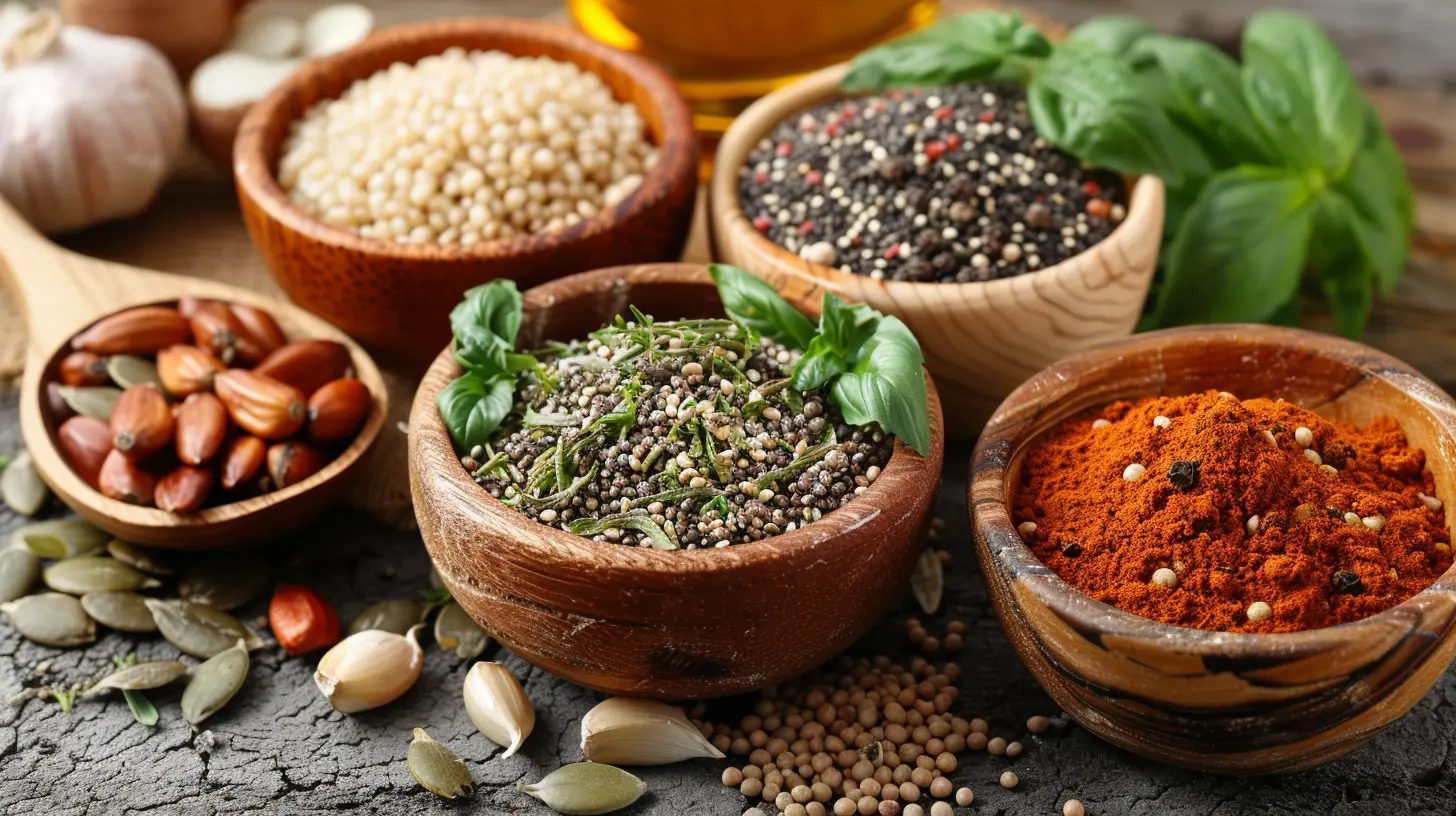Wholesome Cooking Tips for a Balanced Lifestyle
18 November 2025
Ever feel like eating healthy is a full-time job? You're not alone. Between busy workdays, family time, and everything in between, who has hours to spend in the kitchen or the money for organic, gourmet everything?
But here's the deal—wholesome, healthy cooking doesn't have to be complicated or boring. In fact, with just a little bit of know-how (and maybe some meal prep hacks), you can actually enjoy the process and feel good about what’s on your plate. Whether you’re looking to lose weight, gain energy, or simply feel more in control of your health, this is your go-to guide.
Let’s roll up our sleeves and dive into the best wholesome cooking tips that’ll help you nourish your body and live a more balanced lifestyle—without losing your sanity.
Why Wholesome Cooking Matters
Before we get into the 'how,' let’s talk about the 'why.' Wholesome cooking is more than just using fresh veggies and ditching the processed junk. It’s about embracing ingredients that fuel your body, support mental clarity, and keep your energy levels up.Think of your body like a car. Feed it the good stuff, and it'll run smoothly. Treat it like a garbage can, well…you get the idea.
Wholesome food = wholesome life. Period.
1. The Power of Whole Ingredients
Let’s start with the basics—your ingredients.Whole foods are foods that are as close to their natural state as possible. That means fruits, veggies, whole grains, legumes, nuts, seeds, and lean proteins.
Here’s how to make the switch:
- Ditch the boxed meals. Most are loaded with sodium, preservatives, and hidden sugars.
- Shop the edges of the grocery store. That’s where the fresh produce, meats, and dairy live.
- Read labels like a hawk. If you can’t pronounce it, you probably shouldn’t eat it.
Want a simple checklist? Look for foods with:
- No added sugars
- Minimal ingredients
- No artificial anything
2. Meal Prep is Your New Best Friend
Let’s face it—life gets hectic. That’s why meal prepping is one of the smartest ways to stay on track.Think of it like setting your future self up for success. You spend a couple hours on Sunday chopping, cooking, and storing. Then during the week, it’s grab-and-go. Easy peasy.
Here’s how to keep it simple:
- Pick 2–3 proteins (like grilled chicken, baked tofu, legumes)
- Add 3–4 veggies, roasted or steamed
- Cook a batch of whole grains (brown rice, quinoa, farro)
- Mix and match through the week so meals stay interesting
Pro tip: Invest in quality storage containers—BPA-free and microwave-safe.
3. Cook With Healthy Fats (Yes, Fats!)
Repeat after me: Fat is not the enemy.The right kinds of fats are actually crucial for brain health, hormone balance, and feeling satisfied after meals. Say goodbye to the '90s low-fat craze, and say hello to these healthy fat heroes:
- Avocado – Slice it, mash it, love it.
- Extra virgin olive oil – Perfect for dressings and light sautéing.
- Coconut oil – Great for high-heat cooking and adds an island vibe.
- Nuts and seeds – Sprinkle on salads or snack on a handful.
Avoid:
- Trans fats
- Hydrogenated oils
- "Vegetable oil blends" (usually code for processed garbage)
Remember: use fats in moderation. A little goes a long way!
4. Spice It Up Without the Salt
If your idea of seasoning starts and ends with salt and pepper, it’s time to spice things up—literally.Herbs and spices can take a bland dish to the next level without adding extra calories or sodium. Plus, many have surprising health benefits.
Try these combos:
- Turmeric + black pepper for anti-inflammatory power
- Cinnamon + nutmeg for blood sugar balance
- Cumin + coriander for digestive health
- Garlic + rosemary for immune support
Don't be afraid to experiment. Your taste buds might just throw a party.
5. Control Portions Without Starving
Here’s a truth bomb: Eating healthy doesn’t mean eating tiny portions. But we do tend to go overboard, especially when eating out or “eyeballing” measurements.Try these tricks:
- Use smaller plates – Sounds silly, but it's a mind game that works.
- Fill half your plate with veggies – Then add your protein and carbs.
- Slow down – It takes your brain about 20 minutes to realize you’re full.
- Listen to your body – Are you hungry or just bored?
It’s about tuning in, not cutting out.
6. Make Smart Swaps That Actually Taste Good
You don’t have to give up your favorite comfort foods—you just have to get a little creative. Here are some easy swaps that’ll fool your taste buds and work wonders for your waistline:- Greek yogurt instead of sour cream
- Zoodles or spaghetti squash for pasta
- Mashed cauliflower instead of mashed potatoes
- Almond or oat milk instead of cream
- Baked or air-fried instead of deep-fried
The key? Don’t think of it as restriction—it’s reinvention.
7. Don’t Fear Carbs—Choose the Right Ones
Carbs get a bad rap, but here’s the thing: You need carbs. Your brain thrives on glucose. The trick is choosing the right kind.Good carbs = complex, fiber-rich, slow-digesting. They don’t spike your blood sugar and keep you full longer.
Great choices:
- Sweet potatoes
- Brown rice
- Quinoa
- Lentils
- Oats
- Whole-grain bread
Steer clear of:
- White bread
- Sugary cereals
- Pastries
- Soda
- Candy (duh)
Just remember: carbs aren't bad—processed carbs are.
8. Blend Instead of Frying
Smoothies are a total game-changer. They’re basically nutrition you can sip—and you can sneak just about anything into them.Need a balanced breakfast or post-workout fuel? Blend up a combo of:
- Leafy greens (spinach, kale)
- Frozen fruits (banana, berries, mango)
- Healthy fats (nut butter, chia seeds)
- Protein (Greek yogurt, protein powder, tofu)
- Liquid (almond milk, coconut water)
Boom—nutrients in a cup, ready to roll.
Meanwhile, fryers (even the air-fried version) should be the exception, not the rule. Too much fat, not enough fiber? Not worth it.
9. Eat the Rainbow (No, Not Skittles)
Colorful foods = diverse nutrients. When your plate looks like a rainbow, you're hitting a wide range of vitamins, minerals, and antioxidants.Here’s a fun challenge:
- Red: Tomatoes, strawberries, beets
- Orange: Carrots, sweet potatoes, bell peppers
- Yellow: Squash, pineapple, corn
- Green: Broccoli, kale, Brussels sprouts
- Blue/Purple: Blueberries, eggplant, purple cabbage
- White: Cauliflower, garlic, onions
This isn’t just pretty—it’s powerful.
10. Cook With Love (Yes, Seriously)
This might sound a little woo-woo, but hear me out.When you cook mindfully and with intention, it shows. Cooking becomes more than just a chore—it becomes an act of self-care and love.
Turn on your favorite playlist. Light a candle. Pour a glass of kombucha (or wine, it's your kitchen). Cooking should feel like a break from your day, not another task.
And here’s a fun bonus? Food that’s made with love always tastes better.
Bonus: Simple Balanced Meal Formula
Still not sure where to start? Here's your no-fail formula for a balanced, wholesome meal:1/2 plate = veggies
1/4 plate = lean protein
1/4 plate = whole grain or starchy veg
+ a small scoop of healthy fat
And if you want dessert? Have it. Just go small, go slow, and actually savor it.
Final Thoughts
Wholesome cooking doesn’t mean you have to become a gourmet chef, eat kale for every meal, or throw out everything in your pantry. It means making small, smart choices that add up over time. It’s about balance, not perfection.Start with one or two of these tips, and work your way up. Before you know it, you’ll be cooking meals that taste amazing, nourish your body, and fit into your life.
Let’s make your kitchen your wellness sanctuary. One wholesome bite at a time.
all images in this post were generated using AI tools
Category:
Healthy CookingAuthor:

Madeline Howard

